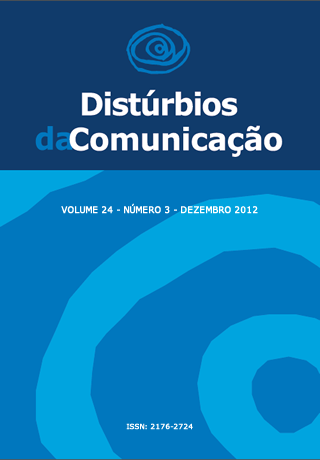Perceptive and acoustic analysis of dubbing of diferent characteres and actors: a case study
Keywords:
voice, acoustics, voice quality.Abstract
Introduction: Dubbing a movie is to use synchronized movements of lips to substitute the speech from actors in a different language. This process is very common in movies and animations. Objective: Analyze, using perceptual and acoustic analysis, the natural voice and dubbing voice that a Brazilian actor uses to compose some characters. Methodologies: One dubbing actor working with dubbing for 33 years was involved in the research. In the fi rst step a questionnaire was applied to fi nd specifi c information about the dubbing actor and about the characters that he dubbed. During the second step samples of natural speech from the subject and samples of the character´s speech were recorded. Two speech therapists with vast experience analyzed the samples and did the perceptual analysis considering the following parameters: laryngeal settings, breathing pauses, speech rate, pitch, emphasis (pitch range, increase in loudness and syllable stretching), vocal quality and articulatory settings; for acoustic analysis were analyzed elocution rate, fundamental frequency (mean, minimum and maximum). Results: At natural voice, appropriate variation of frequency and speech rate were observed. At human character´s voice samples few pauses were observed. Variation of fundamental frequency and speech rate were almost the same as natural voice. The animations character´s voice samples showed differences between speech rate and fundamental frequency. Conclusion: Different vocal settings were found in both perceptual analysis and acoustic analysis and these vocal settings were observed in human characters and animation characters.Downloads
Download data is not yet available.
Metrics
Metrics Loading ...
Downloads
Published
2012-12-30
Issue
Section
Artigos
License
Copyright (c) 2012 Érika S. Ditscheiner, Ana Carolina Constantini, Lúcia F. Mourão, Léslie P. Ferreira

This work is licensed under a Creative Commons Attribution 4.0 International License.









